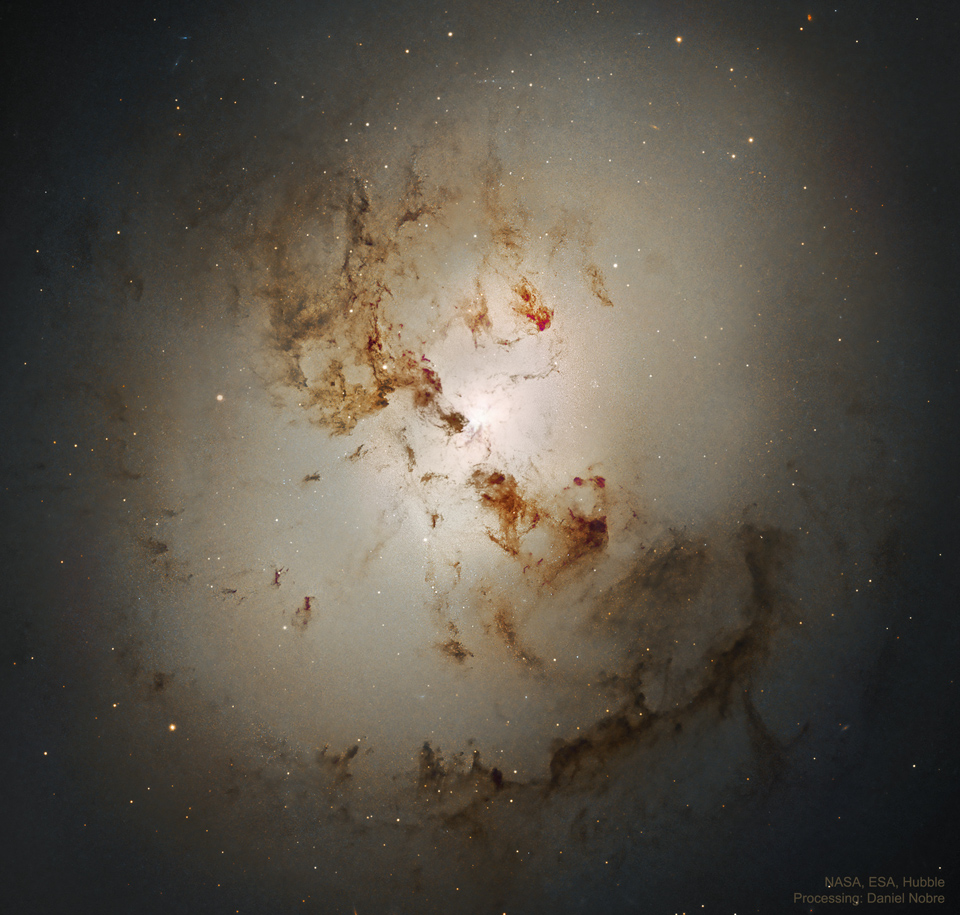NGC 1316的中心: 星系碰撞之后
2021年01月26日
Central NGC 1316: After Galaxies Collide
Image Credit: NASA, ESA, Hubble; Processing & Copyright: Daniel Nobre
Explanation: How did this strange-looking galaxy form? Astronomers turn detectives when trying to figure out the cause of unusual jumbles of stars, gas, and dust like NGC 1316. Inspection indicates that NGC 1316 is an enormous elliptical galaxy that somehow includes dark dust lanes usually found in a spiral galaxy. Detailed images taken by the Hubble Space Telescope shows details, however, that help in reconstructing the history of this gigantic tangle. Deep and wide images show huge collisional shells, while deep central images reveal fewer globular clusters of stars toward NGC 1316’s interior. Such effects are expected in galaxies that have undergone collisions or merging with other galaxies in the past few billion years. The dark knots and lanes of dust, prominent in the featured image, indicate that one or more of the devoured galaxies were spiral galaxies. NGC 1316 spans about 50,000 light years and lies about 60 million light years away toward the constellation of the Furnace (Fornax).
Tomorrow’s picture: galaxy magnet
NGC 1316的中心: 星系碰撞之后
影像提供: NASA, ESA, Hubble; 影像处理与版权: Daniel Nobre
说明: 这个形状怪异的星系,到底是如何形成的?在探究像星系NGC 1316,这种由恒星、气体和尘埃混乱堆积而成的星系之成因时,天文学家就暂时化身为侦探。细加探索后,发现NGC 1316是个庞大的椭圆星系,不过不知何故也拥有螺旋星系所特有的黝黑尘埃带。由哈勃太空望远镜拍摄的细致影像,所拥的细节让天文学家得以重建这个庞大乱集团的形成历史。在深空大视野影像里,可见到因碰撞而形成的庞大气壳,而中心区的特写影像,则显示NGC 1316的内围几乎没有球状星团。这种效应是星系在过去数十亿年里,曾和其他星系发生碰撞或合并的预期结果。而在主题影像中极为明显的黝黑物质结和尘埃带,显示有1个或数个被吞食的星系是螺旋星系。宽约50,000光年的NGC 1316,位在天炉座方向大约6千万光年远之处。
明日的图片: galaxy magnet

